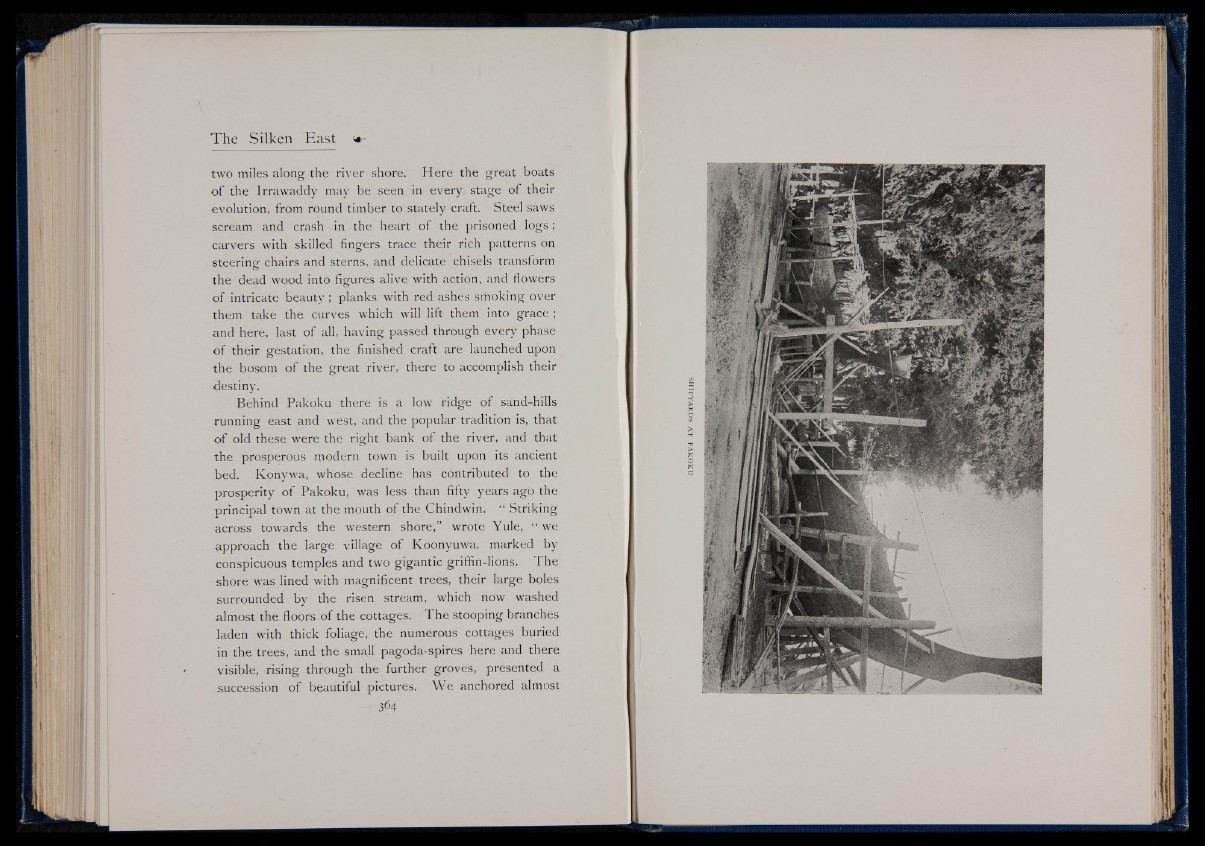
two miles along the river shore. Here the great boats
o f the Irrawaddy may be seen in every stage of their
evolution, from round timber to stately craft. Steel saws
scream and crash in the heart of the prisoned lo g s;
carvers with skilled fingers trace their rich patterns on
steering chairs and sterns, and delicate chisels transform
the dead wood into figures alive with action, and flowers
of intricate beauty; planks with red ashes smoking over
them take the curves which will lift them into grace ;
and here, last of all, having passed through every phase
of their gestation, the finished craft are launched upon
the bosom of the great river, there to accomplish their
destiny.
Behind Pakoku there is a low ridge of sand-hills
running east and west, and the popular tradition is, that
o f old these were the right bank of the river, and that
the prosperous modern town is built upon its ancient
bed. Konywa, whose decline has contributed to the
prosperity of Pakoku, was less than fifty years ago the
principal town at the mouth of the Chindwin. “ Striking
across towards the western shore,” wrote Yule, “ we'
approach the large village of Koonyuwa, marked by
conspicuous temples and two gigantic griffin-lions. The
shore was lined with magnificent trees, their large boles
surrounded by the risen stream, which now washed
almost the floors of the cottages. The stooping branches
laden with thick foliage, the numerous cottages buried
in the trees, and the small pagoda-spires here and there
visible, rising through the. further groves, presented a
succession of beautiful pictures. We anchored almost
SHIPYARDS AT PAKOKU